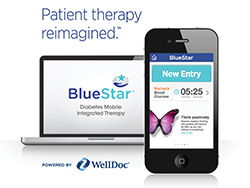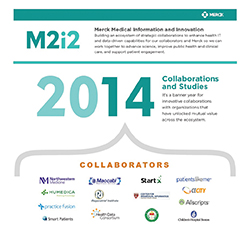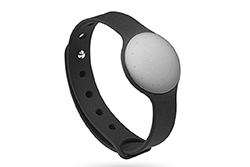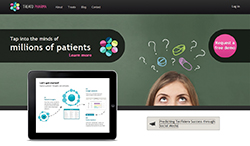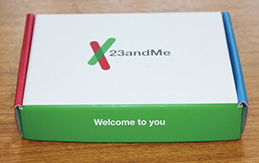“The healthcare industry continues to transform at breathtaking speed but, for marketers, the benefits of change outweigh the costs. Jess Seilheimer reports on 10 game-changing healthcare themes [to MM&M].
Source : http://www.mmm-online.com/10-trends-that-are-turning-healthcare-on-its-head/article/338980/
It’s an exciting time to be in healthcare. In 2013, we saw the emergence of a few trends which shook the industry to its core from an organizational and execution perspective, but which fell largely under the theme of “sounds great, but how do we do it all?”
Enter 2014. Healthcare graduated from “innovation 101” into advanced studies and we’re seeing certain trends mature as organizations continue to experiment with new opportunities driven by marketplace demands and changing customer behaviors.
Here are 10 trends that will continue, or begin, to reimagine the healthcare industry, for better or worse.
1 Technology is definitely the new Healthcare R&D.If you didn’t believe it in 2012, it’s time to get on board—the days of blockbuster products are long gone. Many companies are exploring technology partnerships, and building technology products and platforms to complement “the pill.” Take WellDoc, which is one of the first companies to reimagine what the Rx stands for. Its BlueStar Diabetes product delivers “interactive mobile therapy”; the first disease therapy to be prescribed through an app, where a combination of algorithms and drugs could alter the way medicine is practiced in the future.
Additionally, Digital Health has received an influx of funding from private venture capital deals. Rock Health’s 2013 End of Year Report shows 39% growth in digital health private funding over 2012, topping out at around $2 billion, with top focus on the following categories: EHR and clinical workflow; analytics and big data; digital medical devices; wearables and biosensors; population health management; and consumer engagement.
Health-tech acquisitions are also on the rise, as noted by deals with multiple payers, most notably United Healthcare’s acquisition of Audux Health Solutions—working on Zensey, a gamified health social network and employee wellness program.
2 Startups want a piece of digital health. Healthcare entrepreneurism, startups, incubators and accelerators are at an all-time high. Popular accelerators include Rock Health, as well as Tigerlabs, StartUp Health, The Iron Yard and a host of others. Healthtech startups also had a very large presence at this year’s SXSW.
“Everyone wants a piece of digital health,” says Larry Mickelberg, chief digital officer at Havas Health. “We saw this trend in the 1990s and again in 2002 as entrepreneurs followed the financial trends and opportunities.”
Shwen Gwee, chief digital officer, Chandler Chicco Companies, believes innovation is in the hands of startups. “Pharma sometimes can’t move fast enough and technology acquisitions will be everything for them,” he says. “While startups aren’t necessarily built for the healthcare system, the marriage of the design and user experience of startups with the expertise of the regulated environment is a match made in heaven for healthcare.”
With the increase of health-tech startups, incubators/accelerators, comes increased scrutiny. Entrepreneurs will need to weed out the disingenuous players. “Health-tech entrepreneurs are super exciting,” notes Sachin Jain, MD, chief medical information and innovation officer at Merck, “but they need to focus on outcomes and driving towards better care and lower costs—not just cool technology.”
3 Innovation doesn’t mean always mean invention.Reimagining the way we do business requires knowing the strengths of what works, and how we can augment and improve upon them. Advancements in technology and shifting customer attitudes and behaviors drive us to innovate to be faster, more sustainable and scalable.
“Innovation in pharma may be in its infancy, but it’s happening now,” says Gwee. As of late, tech and talent acquisitions are on the rise and so are new ways of doing business internally for pharma and healthcare collectives.
“There are new playbooks for leveraging corporate resources, socializing new business models and operationalizing innovation,” says Sara Holoubek, CEO of Luminary Labs, which works with companies to help activate innovation. “Ideas and decks are great, but how do you activate it and execute it?”
Merck is one example of a traditional big pharma company that focuses increasingly on digital health and innovation. Merck’s M2i2 innovation team launched in 2013 with the mandate of building strategic collaborations to enhance health IT and data-driven capabilities. The team’s experts connect the dots between government, healthcare entrepreneurship, investment banking, public health sector and clinical medicine. “(Its) diversity drives the agenda of healthcare transformation,” says Jain.
He offers advice for other companies entering the innovation theme. “Try not to confuse innovation activities with achievements. Just because you are ‘doing something’ doesn’t mean it’s the right thing. Everyone starts out with the best of intentions, but make sure you are solving problems for your customers and core business.”
Gwee believes that smaller biotechs have the upper hand with innovation because they can differentiate, scale capabilities, and reimagine and adapt old business models with risk. “But, like Merck,” he says, “other big pharma companies will win with priority additions of key disciplines CIOs CTOs and CMOs.”
Likeminded, Holoubek is steadfast in her counsel to others. “Innovation is not an advertising campaign. Those that want to transform their business through the technology and data need to build real competencies and systems, versus one-off programs.”
4 Connected Care. Connected technologies enable wellness to start and end with the consumer. Web, mobile, car, home, smart glasses, EHR, pharmacies, wearable devices, bio sensors, wi-fi and cloud-based systems integrate into the entire patient journey and connect into the provider/payer ecosystem. Mobile plays a huge part, especially for millennials, who send an average 88 texts per day, and for whom mobile isn’t an activity—it’s a lifestyle. “Healthcare everywhere is the new wellness,” surmises Mickelberg.
By 2018, mobile health activity monitors will continue to represent the lion’s share of the wearable market, reaching $5.8 billion, according to Transparency Market Research. Fitness and sports wearables offer the most solutions for consumers and, combined with healthcare devices, will account for more than 80% of the share.
Wrist wearables, like Nike Fuel Band, Fitbit, Jawbone UP, emerged last year as the new health trackers. And this year at CES, we saw wearables advance into a larger data-driven health companions like the Misfit Shine, Atlas and Heal GoBe—a new, crowd-funded product that claims to measure the calories you consume and burn through your skin, by reading the glucose in cells.
“We still have a long way to go in making wearables truly wearable,” says Sonny Vu, founder and CEO of Misfit Wearables. “All the science in the world won’t save us if we can’t reliably gather data. That said, wearables are only the first step in a bigger movement towards more connected devices and ambient monitoring.” Sensor-based and wifi-enabled products are setting the stage to create a healthier, safer and connected smart home, while the automotive sector is also turning heads with connected products.
5 Quantifying the Health Tracker Revolution. There are currently 97,000 mobile health apps in 62 app stores, and the top 10 apps alone generate 4.3 million downloads each day. But while many companies are still focusing on consumer-facing gadgets and apps that will improve your life, what’s happening with all the data being collected? Currently only 9% of data is being tracked and used. That might be why data and analytics is responsible for $161 million in digital health funding, and companies (even providers like Aetna) are focusing on how to making passive data, more active and useful.
But this is not a simple task, as Mickelberg points out. “There are a myriad of input and data challenges, sensors, monitors and APIs that represent an algorithmic synthesis challenge in the marketplace.”
Gwee also sees major challenges. “Can we reap the benefits of open data if we are so concerned about our privacy? How do we leverage it? We need to know how the data is informing us to make better health decisions.”
Unfortunately, app developers and healthcare companies rarely speak the same language. But companies like Validic are setting an early path for standardizing these data; they collect data from the most popular m-health apps, wearables and in-home medical devices, and turn it into a single, uniform format with standardized units, so everyone from healthcare providers, payers and patients know what to expect and how to make it actionable.
6 Co-collaboration. “Partnerships”, a broad- based term that we’ve heard for years, has materialized into something larger in recent months, and healthcare companies are increasing their partnerships. For example, Aetna has teamed up with Citi® to create Money2SM for Health, a mobile- and web-based tool allowing patients to review, understand and pay healthcare bills in one place.
Meanwhile, crowd-sourcing of ideas has evolved into formalized competitions and challenges known as hackathons, where technologists partner with business-minded individuals and engineers to create products and technologies that solve specific problems for consumers, such as Norvatis’s Mobile Health Challenge and NY Presbyterian Hospital Hackathon. There has also been an increase in the crowd-funding of healthcare projects on platforms like Indiegogo.
7 Consumer-centric experiences are the new Rx. Consumers expect more from their healthcare treatments and wellness routines, but CRM/loyalty and advocacy programs tend to be stale, not personalized. The industry needs to move beyond writing a prescription as the last measure of conversion for a doctor/patient and towards developing meaningful, engaging experiences that traverse the entire customer journey and promote long-term loyalty and advocacy.
“It isn’t about sending email blasts or direct mail anymore,” says Chandler Chicco’s Gwee. “We need to ascertain where user experience and design fit in, so we are effectively solving a problem by addressing specific customer needs and creating something that is permissive and valuable, versus interruptive and not customized.”
8 Social concierge is the new call center. While the rest of the world converses via click-to-chat, reddit AMAs, Twitter and Facebook, pharma still forces customers to call into a 1-800-number black hole. That’s just not the way people behave these days. It’s an on-demand world and pharma needs to catch up.
“Based on research we’ve done,” says Gwee, “people are demanding customer service responses on social channels in general—they are not going to make a concession because it’s healthcare. We actually make it more difficult for them by not offering social customer service.”
There is an expected immediacy to communication styles, and information is shared in bite-size chunks. This is not about being on Twitter—it’s about outfitting your owned assets with social customer service outlets so consumers can find you when they need you. Pharma could take a page out of the playbooks of JetBlue and J. Crew, or even Cleveland Clinic. These brands know how to build a social customer service offering and interact with their customers in the ways their customers are demanding.
9 Real-time social insights. Imagine if you could plan a research methodology, field and synthesize a study in two weeks for 20% less cost (and time) than it takes to field traditional, behind-the-glass, qualitative research? Newer social technologies like Smart Patients, MedLive and Treato now allow us to move past granular and antiquated “social listening” and into NLP (natural language processing) conversation that generates more profound themes and insights.
“Traditional market research is incentivized, facilitated and moderated,” says Gwee. “It’s not authentic. It’s somewhat biased and staged, versus analyzing real social conversation in the context of the consumer.”
Additionally, companies now have the ability to understand other topics, brands and interests with which customers engage. Having a lens into their entire social-interest graph is something pharma can use to its advantage when it comes to creating more personalized content and experiences.
10 The debate over mainstream personal genomics. The FDA recently issued an enforcement action against genetics-testing company 23andMe, demanding that it stop selling and marketing a $99 testing kit. But the company claimed that the FDA was over-regulating and effectively stifling innovation.
So is personal genomics preventative or provocative? “It’s a very polarizing issue,” says Gwee. “It may cause hypochondria, drive up office visits and pre-certifications —and ultimately impact the Accountable Care Act. On the other hand, it could save millions in preventative care. A big opportunity exists for a genomics databases to integrate into EHRs. Additionally genomics could aid in some late-onset diseases.”
In a recent SXSW keynote, 23andMe CEO Anne Wojcicki made it clear that her number-one priority is to resolve any issues with the FDA and resume to business as usual. “We’re not going to switch gears and become another ancestry company.””
Source : http://www.mmm-online.com/10-trends-that-are-turning-healthcare-on-its-head/article/338980/
Jess Seilheimer is Founder and Chief Strategy Officer for Cretegic, a full-stack marketing consultancy that accelerates business planning & strategy into creative marketing execution for brands and startups.





